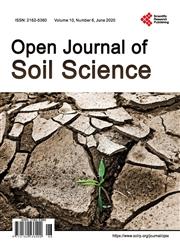The Fate of Agent Blue, the Arsenic Based Herbicide, Used in South Vietnam during the Vietnam War
引用次数: 11
Abstract
The destruction of the South Vietnamese rice (Oryza sativa L) crop using an arsenic-based herbicide known as Agent Blue during the American Vietnam War (1965-1972) was not a secret; however, it received little media attention in the United States. Republic of Vietnam and United States (U.S.) militaries began destroying food crops (rice) in November of 1962 primarily via aerial applications in the Mekong Delta and Central Highlands of South Vietnam. Spraying of Agent Blue on 100,000 ha of mangrove forests and about 300,000 ha of rice paddies just before rice harvest time resulted in the destruction of the standing crop and rendered the land contaminated with arsenic (As). Six Rainbow herbicides, commonly called Agent Orange, Agent Green, Agent Pink, Agent Purple, Agent White, and Agent Blue, were sprayed on wetlands, rice paddies, forests, mangroves, bamboo and military base perimeter fences to defoliate jungle vegetation, reveal guerilla hiding places and destroy the food supply of enemy troops. South Vietnamese farmers, U.S. and Republic of Vietnam military personnel, and communist insurgents were exposed to these herbicides with immediate and longer term impacts on personal health, civilian household food security and population-wide famine. Agent Blue (cacodylic acid, C2H2AsO2,) was the most effective of all the Rainbow herbicides in killing rice and grasses. Manufacturing of cacodylic acid began in the late 1950s in the U.S. at the Ansul Company chemical plant in Marinette, Wisconsin and Menominee, Michigan. During the Vietnam War, ocean going ships were loaded with 208-liter Agent Blue barrels and shipped via the St. Lawrence Seaway to the coast of South Vietnam. Arsenic (As) is a naturally occurring element that is found throughout SE Asia deltas including the Mekong Delta. Today arsenic contaminated rice and groundwater are growing concerns as neither naturally occurring arsenic nor anthropic arsenic have a half-life and cannot be destroyed. Anthropic arsenic has remained in the Mekong Delta environment for the last 60 years and added to persistent As contamination in water supplies, sediments and soils. Water soluble arsenic primarily leaches into the soil root zone and the groundwater or is carried by floodwater into adjacent waterways or volatilized under anaerobic rice paddy conditions as gaseous arsine. The health of 15 million Vietnamese people living in the Mekong Delta is at risk from the combination of manufactured and natural As in drinking water and food supply. The As in the contaminated rice paddy soil, sediment and water is up taken by fish, shrimp or by crop vegetation and trace amounts can end up in the food supply (rice grain) or be bioaccumulated by the fish, shrimp and birds which when eaten were bioaccumulated in the Vietnamese people. It is urgent that elevated As concentrations in water supplies and agricultural products be identified and mitigated through better run-off control and groundwater management; improved rice genetics and alternate crop selections; shifts in crop management associated with tillage, fertilization and phosphorus use; and systematic monitoring of food and drinking water.越南战争期间在南越使用的砷基除草剂蓝剂的命运
在美越战争期间(1965年至1972年),南越水稻(Oryza sativa L)作物被一种名为“蓝剂”的砷基除草剂摧毁,这不是秘密;然而,它在美国几乎没有受到媒体的关注。1962年11月,越南共和国和美国军队开始主要通过在湄公河三角洲和南越中部高地的空中应用摧毁粮食作物(水稻)。在水稻收割前向100000公顷红树林和约300000公顷稻田喷洒蓝剂,导致现有作物被毁,土地被砷污染。六种彩虹除草剂,通常被称为橙剂、绿剂、粉剂、紫剂、白剂和蓝剂,被喷洒在湿地、稻田、森林、红树林、竹子和军事基地周边围栏上,以落叶丛林植被,揭露游击队的藏身之处,破坏敌军的粮食供应。南越农民、美国和越南共和国军事人员以及共产主义叛乱分子接触到这些除草剂,对个人健康、平民家庭粮食安全和全人口饥荒产生了直接和长期的影响。蓝剂(cacodylicacid,C2H2AsO2)是所有Rainbow除草剂中杀稻灭草效果最好的。20世纪50年代末,美国安苏尔公司位于威斯康星州马里内特和密歇根州梅诺米尼的化工厂开始生产二碳酸。越南战争期间,远洋船只装载了208升的蓝色特工桶,通过圣劳伦斯航道运往南越海岸。砷(As)是一种天然存在的元素,在包括湄公河三角洲在内的东南亚三角洲都有发现。如今,受砷污染的水稻和地下水越来越令人担忧,因为天然砷和人为砷都没有半衰期,不能被破坏。在过去的60年里,砷一直存在于湄公河三角洲的环境中,并增加了供水、沉积物和土壤中持续的砷污染。水溶性砷主要渗入土壤根区和地下水,或被洪水带入邻近水道,或在厌氧水稻条件下以气态砷的形式挥发。生活在湄公河三角洲的1500万越南人的健康正面临饮用水和食品供应中人造砷和天然砷结合的风险。受污染的稻田土壤、沉积物和水中的As被鱼类、虾或作物植被吸收,微量As最终可能进入粮食供应(稻米),或被鱼类、虾类和鸟类生物累积,这些鱼类、虾和鸟类在食用时在越南人民中具有生物累积性。迫切需要通过更好的径流控制和地下水管理来查明和缓解供水和农产品中砷浓度升高的问题;改进水稻遗传和替代作物选择;与耕作、施肥和磷利用相关的作物管理变化;以及对食物和饮用水进行系统监测。
本文章由计算机程序翻译,如有差异,请以英文原文为准。
求助全文
约1分钟内获得全文
求助全文

 求助内容:
求助内容: 应助结果提醒方式:
应助结果提醒方式:


